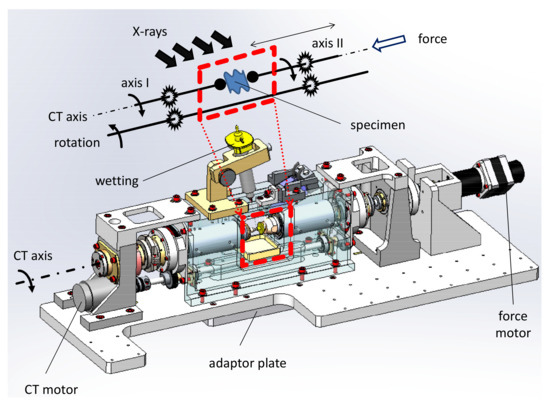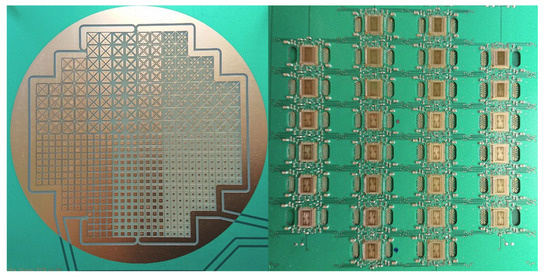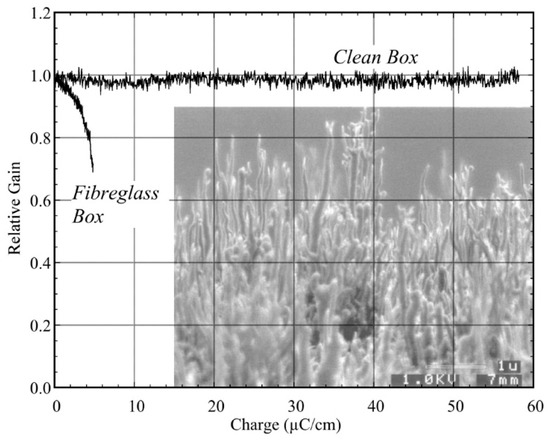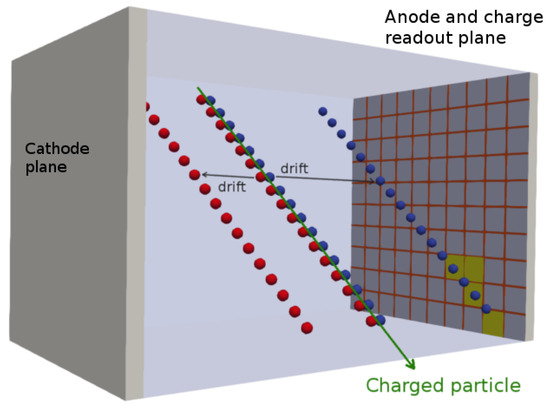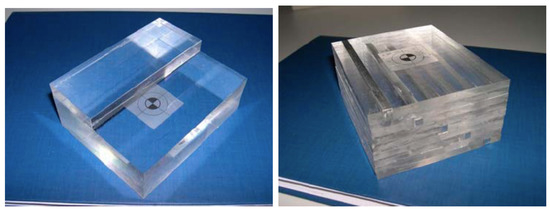Selected Papers from Instruments’ Editorial Board Members
A topical collection in Instruments (ISSN 2410-390X).
Viewed by 15813
Share This Topical Collection
Editor
Topical Collection Information
Dear Colleagues,
I am pleased to announce a new Instruments Special Issue that is quite different from our typical ones, which will mainly focus on either selected areas of research or special techniques. Being creative in many ways, with this Special Issue, Instruments is compiling a collection of papers submitted exclusively by its Editorial Board Members (EBMs) covering different areas of scientific instrumentation and its related methods and theory. The main idea behind this Issue is to turn the tables and allow our readers to be the judges of our board members.
Prof. Antonio Ereditato
Guest Editor
Manuscript Submission Information
Manuscripts should be submitted online at www.mdpi.com by registering and logging in to this website. Once you are registered, click here to go to the submission form. Manuscripts can be submitted until the deadline. All submissions that pass pre-check are peer-reviewed. Accepted papers will be published continuously in the journal (as soon as accepted) and will be listed together on the collection website. Research articles, review articles as well as short communications are invited. For planned papers, a title and short abstract (about 100 words) can be sent to the Editorial Office for announcement on this website.
Submitted manuscripts should not have been published previously, nor be under consideration for publication elsewhere (except conference proceedings papers). All manuscripts are thoroughly refereed through a single-blind peer-review process. A guide for authors and other relevant information for submission of manuscripts is available on the Instructions for Authors page. Instruments is an international peer-reviewed open access quarterly journal published by MDPI.
Please visit the Instructions for Authors page before submitting a manuscript.
The Article Processing Charge (APC) for publication in this open access journal is 1400 CHF (Swiss Francs).
Submitted papers should be well formatted and use good English. Authors may use MDPI's
English editing service prior to publication or during author revisions.
Published Papers (5 papers)
Open AccessFeature PaperArticle
TomoPress—In Situ Synchrotron-Based Microtomography under Axial Load
by
Alexander Rack, Johannes Stroebel, Tatjana Rack, Yves Dabin, Christine Knabe, Michael Stiller, Paola Coan and Pierre Bleuet
Cited by 4 | Viewed by 3016
Abstract
Computed tomography (CT) with hard X-rays is a mature technique that is in regular use to depict the interior of opaque specimens with spatial resolutions up to the micrometre range (microtomography or µCT). Short acquisition times and sophisticated contrast modes are accessible when
[...] Read more.
Computed tomography (CT) with hard X-rays is a mature technique that is in regular use to depict the interior of opaque specimens with spatial resolutions up to the micrometre range (microtomography or µCT). Short acquisition times and sophisticated contrast modes are accessible when synchrotron light sources are combined with microtomography—SR-µCT. Both features render SR-µCT as excellent probe to study delicate samples in situ, for example under mechanical load by deploying corresponding sample environments. The so-called TomoPress is such a device available within the public user programme of tomography beamline ID19 of the European Synchrotron Radiation Facility (ESRF). It allows one to study samples under high axial load (up to 500 N) with high spatial resolution up to the micrometer range. Different gauges are installed to allow online monitoring of the applied force. Constant humidity, temperature and wetting are routinely available as well. The article shall outline basic design principles of the press as well as parameters for its utilisation in a descriptive manner. Selected examples underline the potential of the device for such diverse fields as biomedical research, life sciences and materials research.
Full article
►▼
Show Figures
Open AccessArticle
A New Concept for Kilotonne Scale Liquid Argon Time Projection Chambers
by
Jonathan Asaadi, Martin Auger, Roman Berner, Alan Bross, Yifan Chen, Mark Convery, Laura Domine, Francois Drielsma, Daniel Dwyer, Antonio Ereditato, Damian Goeldi, Ran Itay, Dae Heun Koh, Samuel Kohn, Patrick Koller, Igor Kreslo, David Lorca, Peter Madigan, Christopher Marshall, Thomas Mettler, Francesco Piastra, James Sinclair, Hirohisa Tanaka, Kazuhiro Terao, Patrick Tsang, Tracy Usher, Michele Weber and Callum Wilkinsonadd
Show full author list
remove
Hide full author list
| Viewed by 2826
Abstract
We develop a novel Time Projection Chamber (TPC) concept suitable for deployment in kilotonne-scale detectors, with a charge-readout system free from reconstruction ambiguities, and a robust TPC design that reduces high-voltage risks while increasing the coverage of the light-collection system and maximizing the
[...] Read more.
We develop a novel Time Projection Chamber (TPC) concept suitable for deployment in kilotonne-scale detectors, with a charge-readout system free from reconstruction ambiguities, and a robust TPC design that reduces high-voltage risks while increasing the coverage of the light-collection system and maximizing the active volume. This novel concept could be used as a far detector module in the Deep Underground Neutrino Experiment (DUNE). For the charge-readout system, we used the charge-collection pixels and associated application-specific integrated circuits currently being developed for the liquid argon (LAr) component of the DUNE Near Detector design, ArgonCube. In addition, we divided the TPC into a number of shorter drift volumes, reducing the total voltage used to drift the ionization electrons, and minimizing the stored energy per TPC. Segmenting the TPC also contains scintillation light, allowing for precise trigger localization and a more expansive light-readout system. Furthermore, the design opens the possibility of replacing or upgrading components. These augmentations could substantially improve the reliability and the sensitivity, particularly for low-energy signals, in comparison to traditional monolithic LArTPCs with projective-wire charge readouts.
Full article
►▼
Show Figures
Open AccessArticle
Six Concepts in Search of an Author
by
Fabio Sauli
Cited by 1 | Viewed by 2633
Abstract
This paper describes several seemingly interesting detector research projects that, after their initial development, seem not to have been pursued.
Full article
►▼
Show Figures
Open AccessFeature PaperArticle
First Operation of a Resistive Shell Liquid Argon Time Projection Chamber: A New Approach to Electric-Field Shaping
by
Roman Berner, Yifan Chen, Antonio Ereditato, Patrick P. Koller, Igor Kreslo, David Lorca, Thomas Mettler, Ting Miao, Francesco Piastra, James R. Sinclair and Michael S. Weber
Cited by 2 | Viewed by 3601
Abstract
We present a new technology for the shaping of the electric field in Time Projection Chambers (TPCs) using a carbon-loaded polyimide foil. This technology allows for the minimisation of passive material near the active volume of the TPC and, thus, is capable to
[...] Read more.
We present a new technology for the shaping of the electric field in Time Projection Chambers (TPCs) using a carbon-loaded polyimide foil. This technology allows for the minimisation of passive material near the active volume of the TPC and, thus, is capable to reduce background events originating from radioactive decays or scattering on the material itself. Furthermore, the high and continuous electric resistivity of the foil limits the power dissipation per unit area and minimizes the risks of damages in the case of an electric field breakdown. Replacing the conventional field cage with a resistive plastic film structure called “shell” decreases the number of components within the TPC and, therefore, reduces the potential points of failure when operating the detector. A prototype liquid argon (LAr) TPC with such a resistive shell and with a cathode made of the same material was successfully tested for long-term operation with electric field values up to
. The experiment shows that it is feasible to successfully produce and shape the electric field in liquefied noble-gas detectors with this new technology.
Full article
►▼
Show Figures
Open AccessFeature PaperArticle
Proton Radiography by Multiple Coulomb Scattering with Nuclear Emulsion Detectors
by
Saverio Braccini, Tommaso S. Carzaniga, Giulia Pisegna and Paola Scampoli
Viewed by 2754
Abstract
The possibility of performing proton radiography by using the proton angular spread due to Coulomb multiple scattering was investigated, for the first time, with an emulsion film detector. Two different phantoms were irradiated with the therapeutic proton beam at the Paul Scherrer Institut
[...] Read more.
The possibility of performing proton radiography by using the proton angular spread due to Coulomb multiple scattering was investigated, for the first time, with an emulsion film detector. Two different phantoms were irradiated with the therapeutic proton beam at the Paul Scherrer Institut (PSI) in Villigen, Switzerland. The first one is a simple polymethylmethacrylate (PMMA) block having two different thicknesses (4 cm and 3 cm), and the second one is a PMMA cube with five aluminum rods embedded along a diagonal. Only one emulsion film was needed to perform the radiography, an important issue as the analysis of this kind of detector is time-consuming. Furthermore, the method showed an enhanced contrast when high atomic-number materials are traversed. This gives an advantage, when compared to proton range radiography.
Full article
►▼
Show Figures




